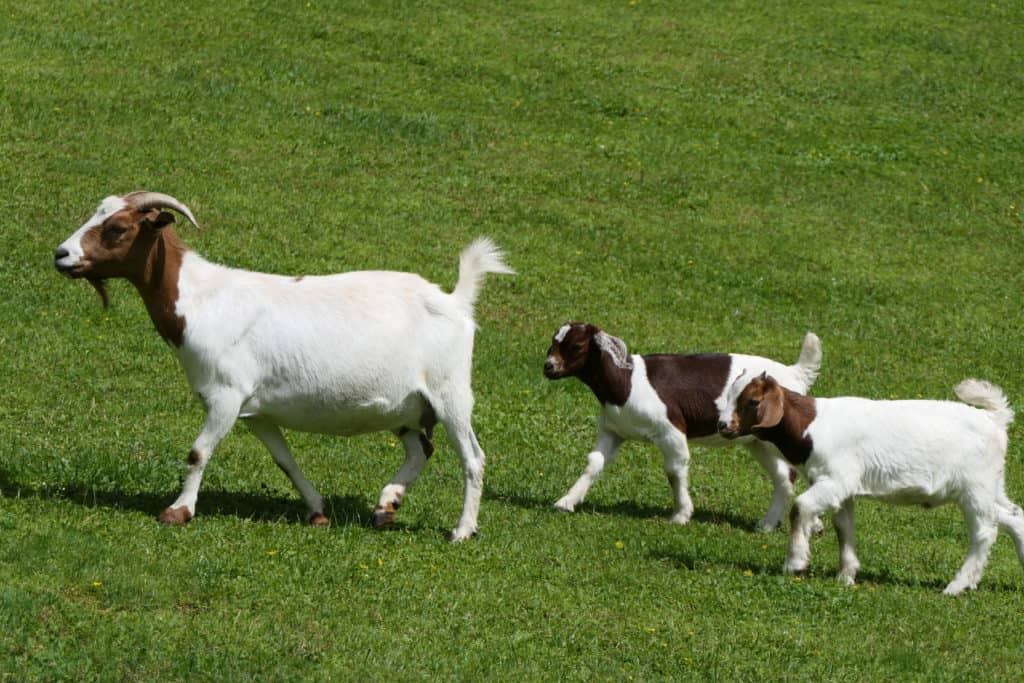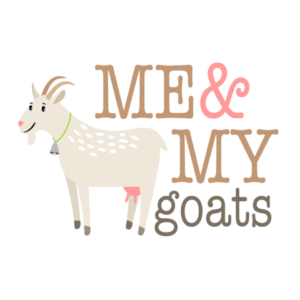
Newborn mammals can’t survive on solid foods. They have to drink milk, which influences the way you have to raise your newborn goats. You may wonder at what point your goats will be ready to graduate to grass, and it’s important to know when your goats are ready so that you don’t start them too early.
Baby goats, or kids, can start to eat foliage as early as two weeks if kept with the mother. At this point they are not yet ready to go completely to grass. That won’t happen until about three months into the goat’s life, when the rumen will be fully developed and full digestion becomes possible.
Knowing when to change foods is just the beginning. Grass is a great option for solid foods, but what about hay, or grains? The process is also different if the kid isn’t raised with his mother, so keep reading for more information on the transition from milk to foliage with a newborn goat.
What difference does the mother make?

Kids raised with their mother develop slightly differently than kids raised without their mothers. Goats are not solitary animals, and do not like to be separated from their mothers when they are young. Goats raised with their mothers tend to learn from their mothers which introduces them to grazing and eating grasses in a natural way.
If you choose to bottle feed a goat, which is the alternative to keeping it with the mother, you take it away from the natural cycle of learning from the mother. This means that you will have to introduce the goat to the concept of grazing and grasses, which can take more or less time depending on the goat.
Some who raise goats claim that you can purchase a starter grain and begin feeding it to your goat at as early as 1 week old. This method is reported to accelerate the timetable for grass and foliage consumption.
More common reports state that goats raised away from their mothers won’t take easily to foliage until 3 or more weeks, which is somewhat longer than the average for goats raised in the company of their mothers.
It is crucially important to remember that this is only the timeframe for when goats will start to eat grass and other foliage. They will begin to experiment, but it will be sometime yet before the rumen is fully developed and milk is no longer a necessity.
What is the rumen?
Goats belong to a class of animals called ruminants, which means that they have different sections of their stomach which allow for the digestion of foods other animals would have no hope of digesting. The first section of the stomach is called the rumen, which is basically a chamber with the intention of slowly starting foods in the digestion process.
When a goat eats foliage, it is deposited through the esophagus into the rumen where it begins to be digested. Rather than passing the food on as other animals do, goats and other ruminants regurgitate the food back into their mouths. Here it is chewed again before swallowed again.
Essentially, the food is digested over and over again before it is even passed to the second section of the goat’s stomach. This long digestion process makes it possible for goats to digest plant matter like grasses. Humans, and other non-ruminant mammals cannot hope to digest grasses and the like, which makes ruminants unique within the animal kingdom.
That first stomach section, the rumen, is not fully developed at the birth of a goat, and needs proper nutrients and food types to grow properly during about the first three months of life. After three months, the rumen is mostly developed.
The rumen is crucial to the development and survival of a young goat, so it is important that it develops correctly and receives everything that it needs.
The Problem with Grass

Given the question proposed by this article, you may be here because you think that a diet of grass will be sufficient to accommodate your goat’s dietary needs. This is a totally understandable assumption given the media portrayal of goats and their ability and willingness to eat anything with very few needs.
Goats will eat grass. It isn’t necessarily bad for them, but it isn’t the best for them. They also prefer weeds, hay, grains, and other types of foliage to grass, so they won’t eat it as readily as they might in other situations. Generally speaking, grass shouldn’t make up very much of a goat’s diet as it lacks some of the necessary nutrients for a goat’s health.
It is also important to be careful when you choose to feed your goat grass. Grass clippings run the risk of containing mold due to trapped excess moisture which has the potential to end up harming your goat. It is better to let your goat graze for grass to avoid potential health risks.
Some types of grass are great, and others are actually really dangerous. Orchard grass, Bermuda grass, and crabgrass are all great options for goat grazing because they are super high in protein and are more easily digestible than many other types of grass.
Other types of grass are terribly dangerous to goats. Tall fescue grass contains a toxin through much of its growing cycle that can make goats really sick, and do lasting damage to them. Other prickly types of grass such as squirrle tail grass have pointed edges that can actually cause serious damage to the insides of your goat.
So when it comes down to it, you can start feeding your goats grass after no more than a few weeks of life. However, a goat will not be prepared to switch to a diet of only foliage until it is at least three months old. Even being able to survive on only foliage, your goat will never be healthy on a diet of only grass, as it presents a lot of health risks for the animal.
